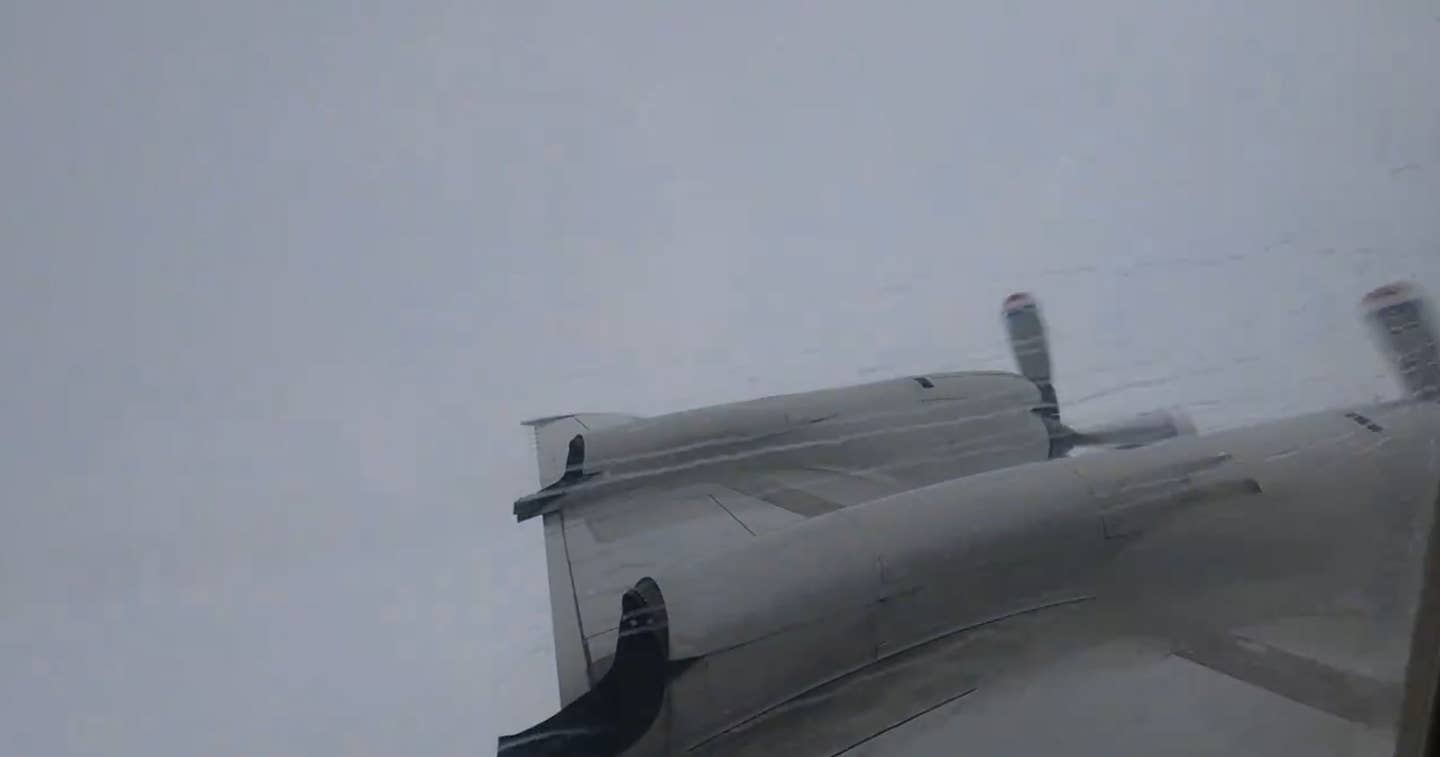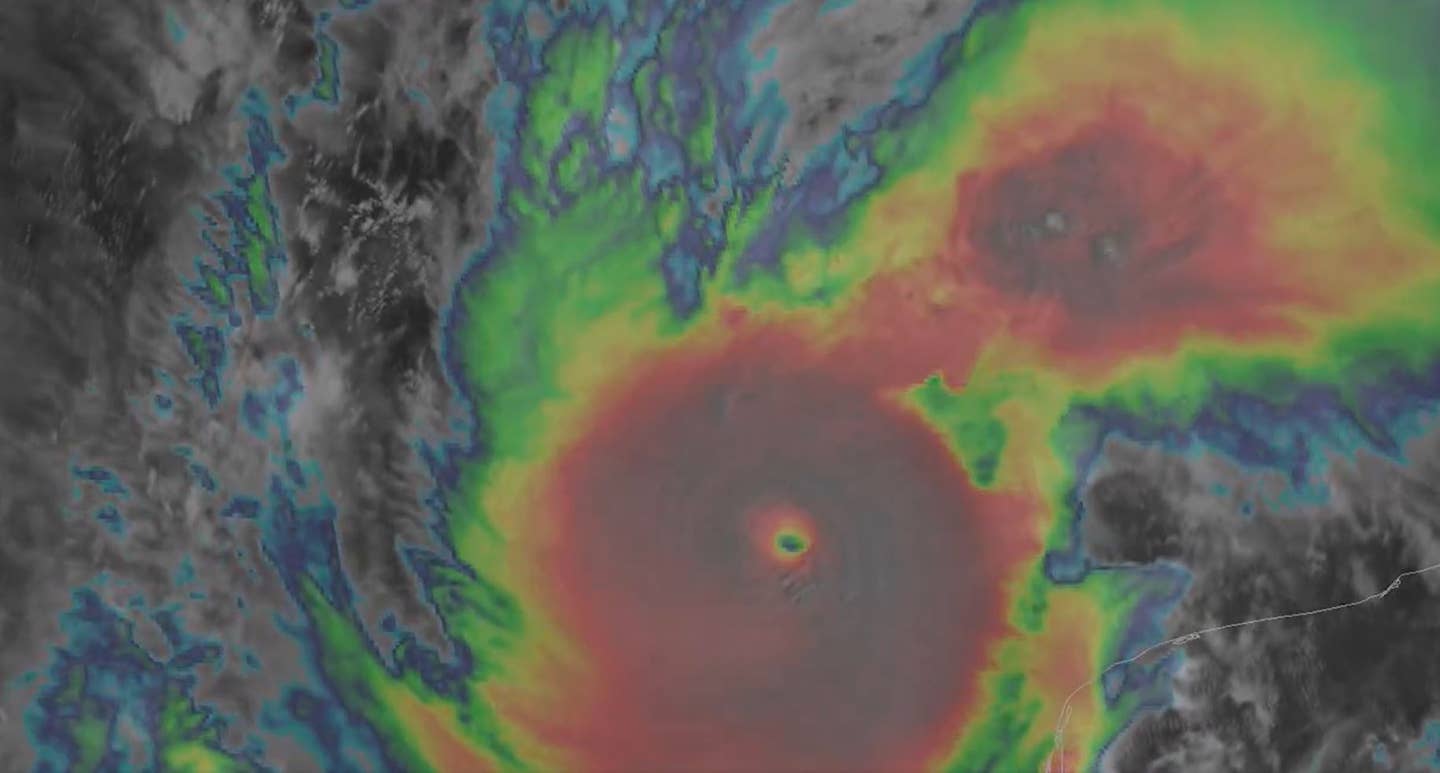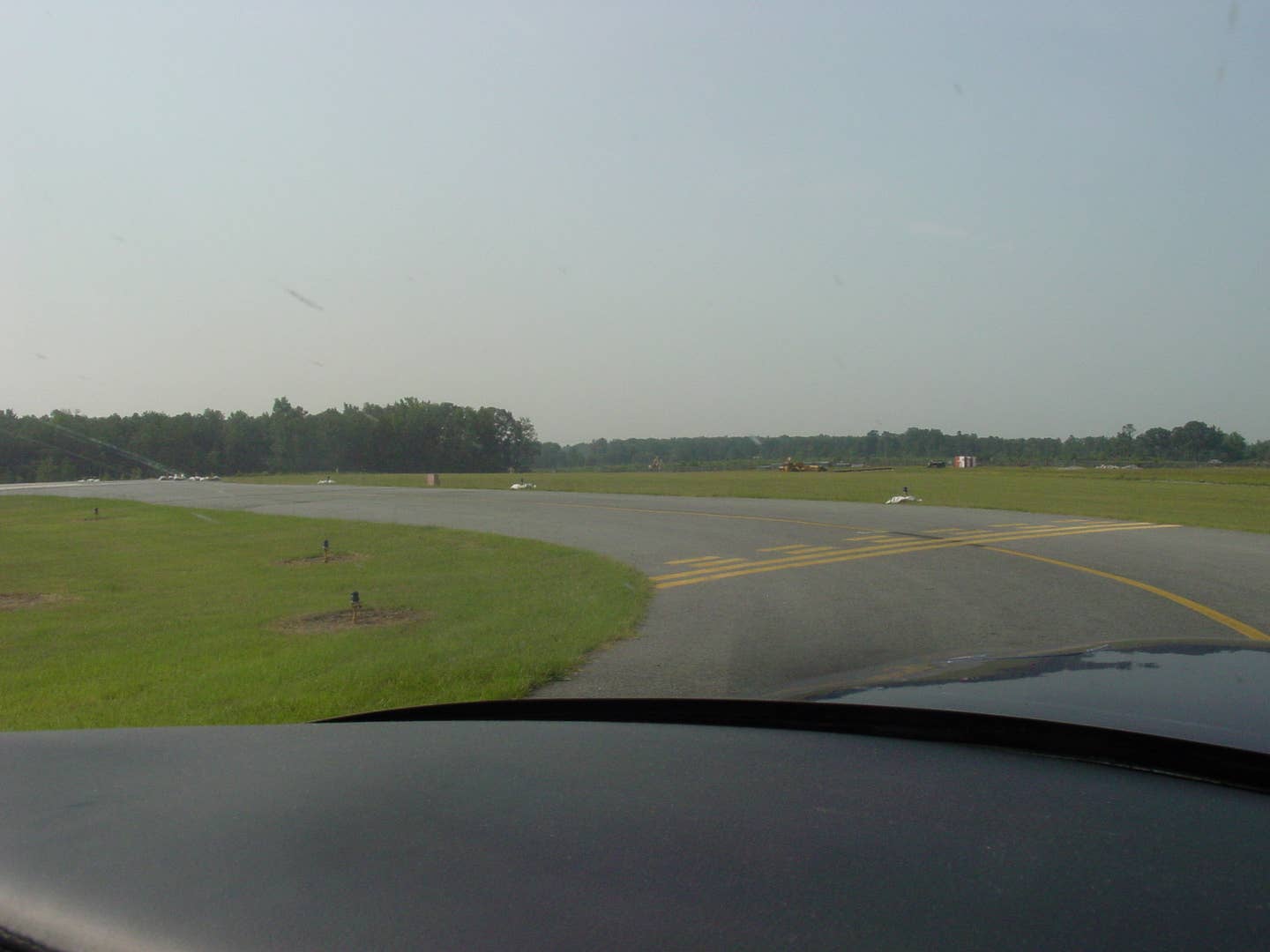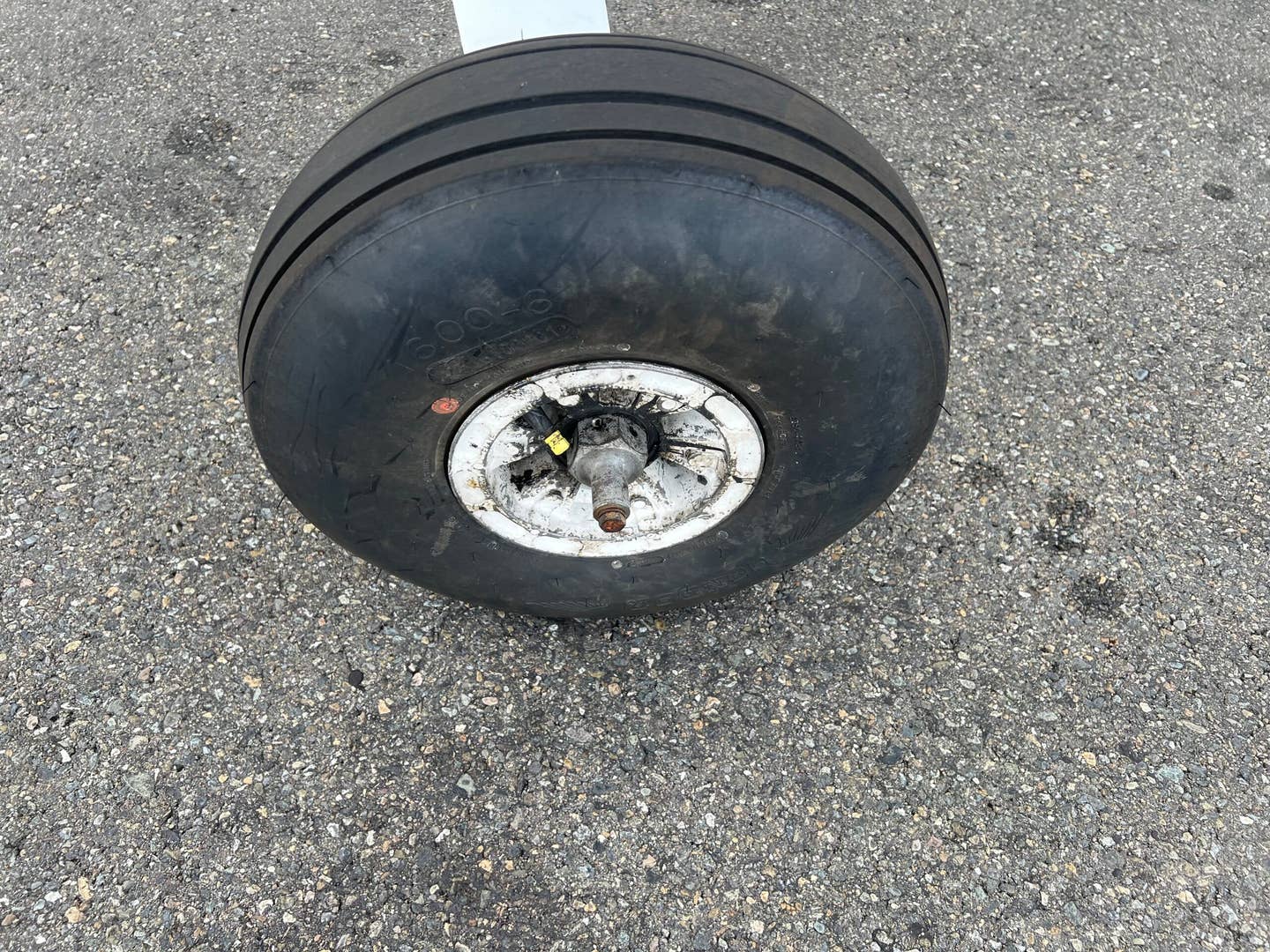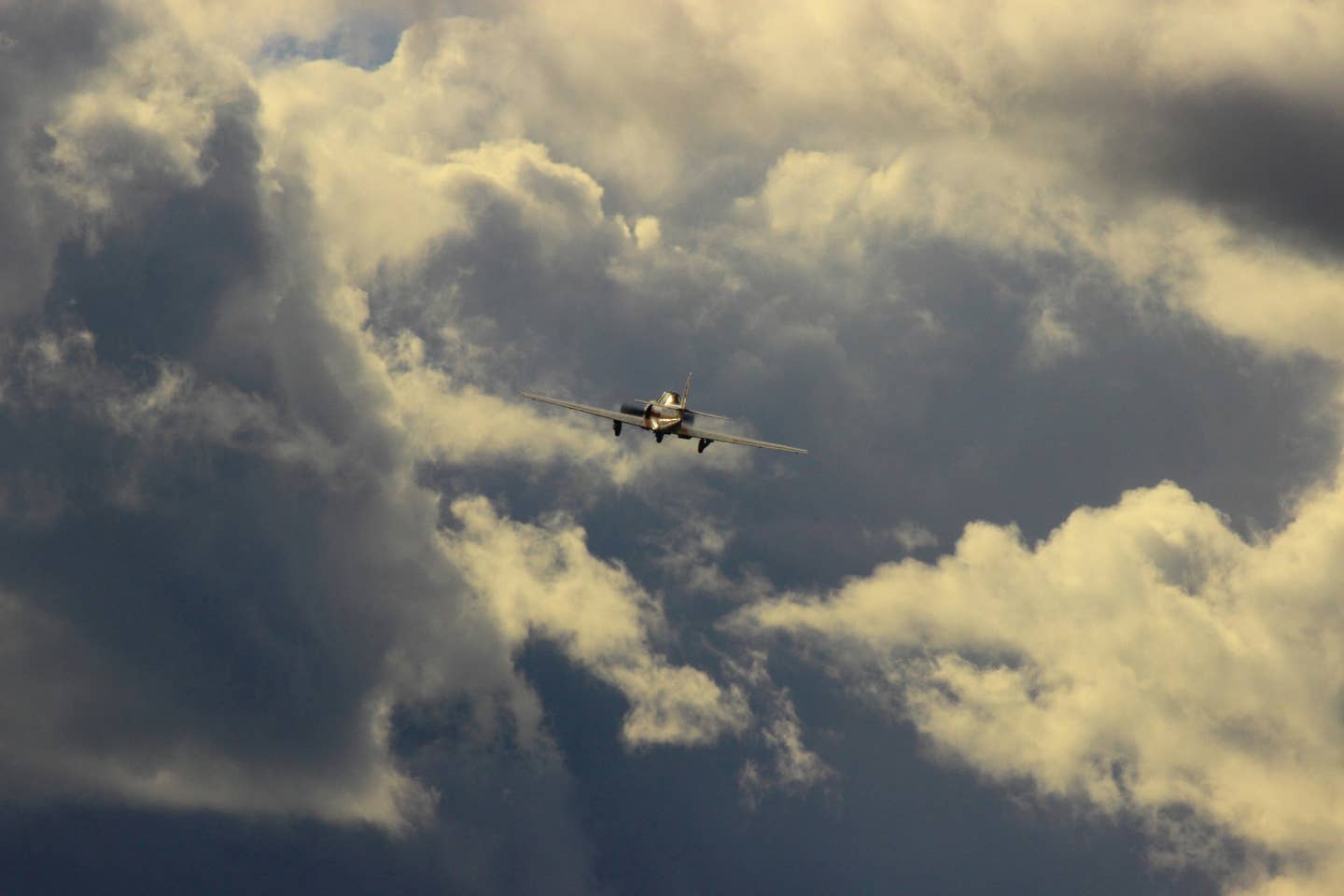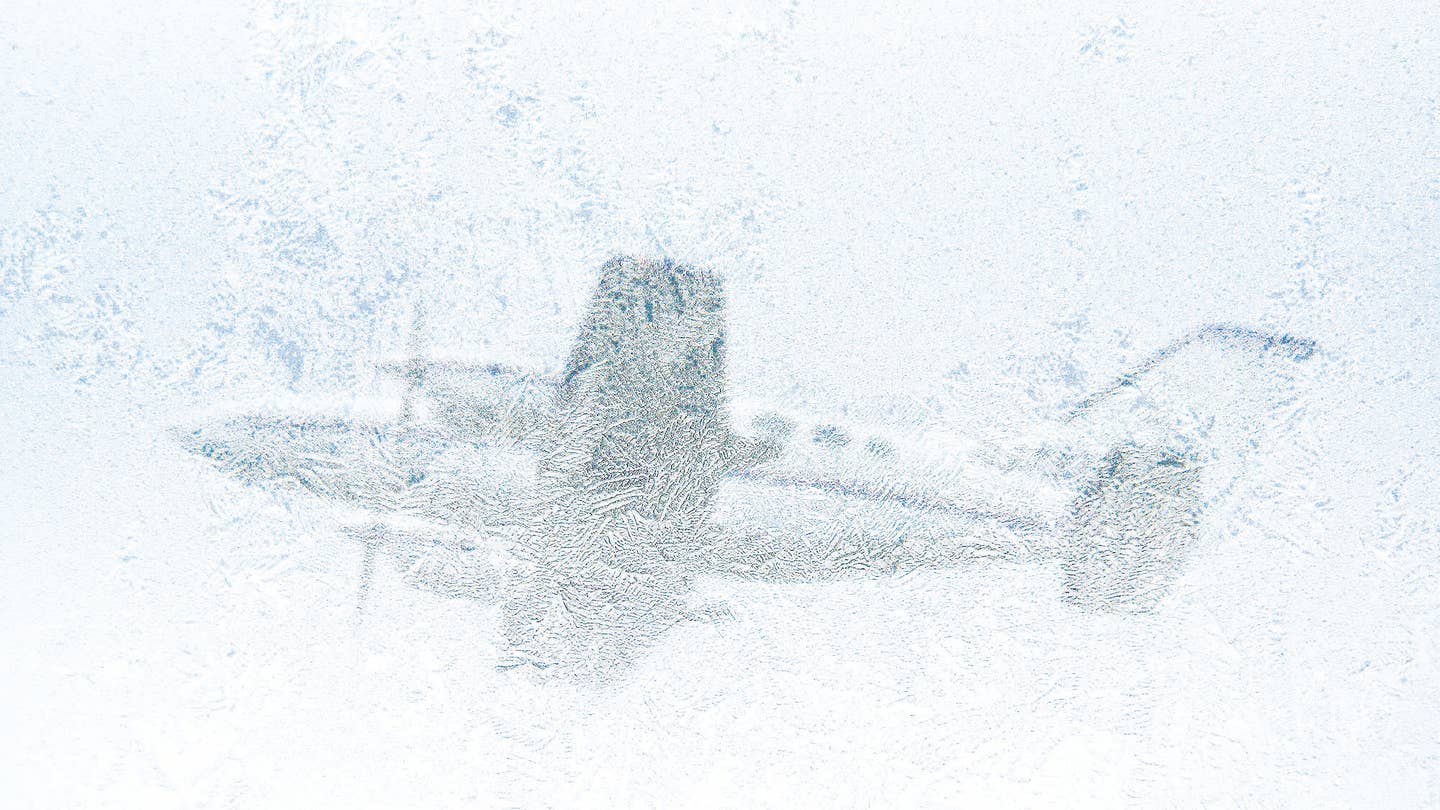
In more than 40 years of flying, Mary Schu says she has never been more frightened than the day she encountered extreme icing in flight.
Schu flies in Oregon, one of the United States’ “iceboxes.” She’s the National Association of Flight Instructors’ 2015 Flight Instructor of the Year as well as an FAA-designated pilot examiner. That winter day in the mid-1990s, Schu was at the controls of a twin-engine, deice-equipped Cessna 421 as a corporate pilot for Kansas State University. Her assignment: fly four passengers from Manhattan, Kansas, to Bozeman, Montana.
“There was a front moving in. So, rather than going direct, I thought I would go east around it,” Schu remembers. “I was going to go to Rapid City, South Dakota, get fuel and then skirt around the edge of the front to the north.” Despite checking the available teletype weather reports and getting a pilot report from an airliner departing ahead of her, she found herself in an emergency almost immediately after takeoff.
“Just as soon as we got into the clouds and climbed about 500 feet, I began to hear these hammers on the wings and fuselage, like ball-peen hammers hitting the surfaces,” she says. “I looked down, and it was the supercooled water droplets that we all hear about and that strike fear into your heart. They should. They were forming over the wing in waves.”
Schu had made a power reduction at 1,000 feet. Now she changed her mind and pushed the throttles to the stops. By the time she reached 3,000 feet, the airplane wouldn’t climb any farther.
The total elapsed time from takeoff rotation to dire emergency was maybe three minutes.
Schu and her passengers survived thanks to good piloting. She didn’t hesitate to declare an emergency. The fortunate proximity of an Air Force base with a 13,500-foot runway that lined up with her departure heading just eight miles from where she had climbed out of Rapid City also helped.
Even so, Schu says, “I just barely had enough airplane, and I barely had enough time.” When she reached the air base, the landing was not by choice. The 421 descended involuntarily at full power, the airspeed indicator showing 60 knots above stall speed, but the control column suggesting otherwise with its buffet. Controlling the airplane was like “sitting on a basketball in a swimming pool,” Schu recalls. “It was just horrifying, the scariest thing I have ever done.”
Welcome to Icing 101: a crash course that’s pass or fail, and you don’t get a retest. You’re studying the four forces of aerodynamics. Ice destroys all of them — robbing an airplane of lift and the positive effect of thrust while dramatically increasing drag and weight.
Cliffs Notes won’t work. The only way you’re going to make it through your icing final exam is to put in the hard work ahead of time by studying and preparing in order to minimize the chances that you’ll find yourself in Slurpee conditions and maximize your expertise at exiting them if you do.
With class now in session, let’s start by talking to some of the top teachers in the field about how water in the atmosphere turns dangerous.
Fred Remer is an associate professor of atmospheric sciences at the University of North Dakota. In addition to his classroom lectures, he has also flown research missions into actual ice in the university’s Citation II.
He explains the basic ingredients for icing, saying, “When I talk to people about icing climatology, I tell them you need clouds. And to get clouds, you need a source of moisture and also a lifting mechanism,” which cools that rising moisture to a point where temperature meets dew point.
It sounds simple, but those ingredients have to mix in just the right way to create an icing danger.
If the cloud forms in air that’s too cold, as is often the case in the winter skies above Remer’s North Dakota classroom, the moisture forms into ice crystals that harmlessly bounce off aircraft surfaces. If the air is too warm, then you just get a free airplane wash.
Size also matters because water droplets at exactly the right temperature but too miniscule have a hard time grabbing ahold of a wing or tail as it rushes by.
What works most effectively for the formation of ice is a large water drop — as big as you can make it, please — that has been cooled to freezing temperatures. Even better is one that has been flash frozen so quickly that it’s still liquid — what’s known as a supercooled liquid droplet (SLD). Something in the range from 5 degrees C to minus 20 will do. Splash that on a cold, metal surface and it’ll freeze on contact. Ping! — a tiny but devastating blow from one of the hammers that Schu heard.
That solid freeze, known as clear ice, can be the most dangerous kind. It can run behind ice-protection equipment, changing the shape of wings, tails and propellers, adding drag and creating a new, unpredictable critical angle of attack.
Drier rime is ice that has a rough, snowy appearance. It’s lighter and tends to pile up at the leading edges of wings and tails where it can alter or block airflow to the areas behind them.
On the days when Professor Remer perversely went ice hunting, he and his colleagues would head for clouds that were feeding off a large, nearby water supply. “We would take our airplane to either Traverse City, Michigan, or Oscoda, Michigan,” Remer says, “so that we would be flying a lot of the lake-effect clouds,” which are downwind from the Great Lakes.
The freezing tops of clouds were frequently best for finding ice because the water there had accumulated as it rose and was as cold as possible while still being visible as cloud moisture.
Remer is quick to point out that ice has a way of defying generalizations. “You can get areas of supercooled liquid water even away from a large body of water,” he explains. For instance, he says, “There are times when stratus clouds will be so juicy, especially when you have warm fronts with warm, moist air flowing up over the front. A lot of times in those stratus clouds, you’ll find very broad areas of icing to high altitudes.”
Here is another situation ripe for SLD: Think of a column with snow falling from high clouds, melting as it falls through a layer of warmer air below, and then chilling to freezing rain again in a colder band near the surface.
Or look behind a storm front on a cold day when the sun warms wet ground just enough to evaporate moisture that re-forms into stratocumulus clouds. Those relatively flat, low- altitude layers can spread out over huge areas, hiding significant ice beneath their soft, quilted tops.
A pilot could spend a lifetime trying to understand where to find icing (and he or she probably should). Still, “icing sort of has a mind of its own,” says George Gill, a flight instructor in the Pacific Northwest. CFI and aviation media analyst Bob Miller couldn’t agree more. His message to students: “Icing is basically where you find it.” So always have a backup plan.
That said, the best plans come from educated guesses. So where do you start when assessing a flight for potential icing conditions? Gill says he teaches students to start with the big picture. “If I have a flight that’s going to take me through weather, I might start with my local news or the Weather Channel,” he says.
From there, it’s on to aviation-specific sources, such as the information on the Aviation Digital Data Service (ADDS) at aviationweather.gov. Miller uses terminal area forecasts and metars. The area forecast provides cloud-top information and a summary of weather trends for large areas. Prognostic charts show weather fronts that you might want to avoid — or at least cross quickly. “If I do a straight line, am I going to be paralleling a front all the way through?” Gill always asks himself. “That may increase my time in potential icing,” he says. “Maybe I should dart to one side or the other before continuing on to my destination.”
There’s also a terrific icing-specific page on the ADDS site at aviationweather.gov/icing, which includes graphical depictions of current icing reports, and forecasts icing probability and severity, freezing levels and more. If Schu had access to these reports in the ’90s instead of teletype weather, she would likely have spent the day sightseeing at Mount Rushmore instead of taking her unplanned tour of Ellsworth Air Force Base.
“With graphical weather like this, it really helps me to better visualize the flight,” says Jeff Willwerth, a flight instructor and commercial pilot who regularly flies across the country during winter in a turbocharged Cirrus that’s certified for flight into known icing conditions, commonly referred to as FIKI.
For you honors students, UND’s Professor Remer recommends looking at atmospheric soundings along the route of flight. These charts, intimidatingly known as “Skew-T Log-P” diagrams, show temperature and dew point for various altitudes above a given location. Where the two lines come together, there’s a cloud. Where that cloud is near the freezing level (the zero Celsius line running diagonally up and to the right), look out. As you follow the lines up the atmosphere, it’s easy to see multiple freezing layers, inversions, and even wind data.
The Skew-T’s aren’t nearly as tough as they look. (If you want to impress your pilot friends, all that surface complexity might be a bonus.) A great source for plotting them is at rucsoundings.noaa.gov/gwt. Don’t worry about all the options; just enter an airport code and a time (check the “latest” box for up-to-date readings), and leave the other controls at their defaults.
For the postgraduate course on Skew-T’s (I confess, I got hooked while doing my research), try Scott Dennstaedt’s excellent online aviation weather course at pilotworkshops.com or take the free tutorial provided by Texas A&M University.
Back to the preflight planning. Gill’s last step is to open the flight-planning app on his tablet computer, on which he can draw out his route and overlay radar images, airmets and pilot reports. The pilot reports get special consideration because they’re the only tools that represent someone who encountered ice in the real world.
Forecasts, including those on the ADDS icing page, are based on algorithms that sometimes can be wrong. So it’s a good idea not to rely too much on any single information source. Just as you learned to cross-check your instruments in flight school, you should scan weather reports to identify any inconsistencies.
“Do I trust the meteorologists?” asks Willwerth, is what it comes down to. “Did they throw a dart at the board and say, ‘Yeah, that icing looks like 9,000 feet to me’? A butterfly flaps its wings in Africa and changes the entire dynamics of the weather system.”
In other words, ice is where you find it.
Given that fact, how do you make the decision to go or not? And how do you preplan for contingencies — those “golden back doors” — about which Bob Miller teaches his students?
It goes without saying that, along with the weather, your airplane and the terrain are two of the biggest variables in the go/no-go decision. If the airplane does not have ice protection, your decision ends at section 91.527 of the federal aviation regulations, which prohibits flight into known or forecast icing conditions.
Yet the trip you might delay in your Cessna Skyhawk could be safe and comfortable in an airplane certified for FIKI conditions. Some of the FIKI aircraft, like Cirrus’ SR22, use a glycol/alcohol-based fluid that oozes from the prop, wings and tail to lower the freezing point of any ice. Others, such as the Cessna 421 that Schu flew out of Rapid City, use ice boots. These pneumatic bladders inflate to break ice off critical airframe surfaces. Some turbine aircraft also use super-hot bleed air from the turbine engines to heat critical parts of the airplane, such as the leading edges of wings, the tail, the windshield and the engine nacelles.
All of these systems widen the utility of an airplane by amazing margins. Yet even with an anti-ice or ice-protection system there are limits. Though you might consider climbing up through a shallow layer of rime to blue skies above in a turbocharged Cirrus, you might be a little more circumspect in a nonturbo airplane.
Still, it’s never a great idea to trudge along through freezing muck. “If you have an airplane that’s ice protected or certified for flight into known icing, that doesn’t mean you should be complacent or relaxed. It just means that the airplane is capable of removing ice while you’re attempting to exit the icing conditions,” says UND Professor Eric Basile, who teaches aviation weather to instrument students. “It’s not a license to fly around in icing conditions just because you can.”
Basile points out that even in a jet, the surfaces are heated by robbing air from the engine. “You’re taking a significant portion of available thrust away,” he says.
Gill remembers his first climb through icing clouds in an Embraer Phenom jet. Climb performance went from its usual 4,000 feet per minute to about 800. “I was blown away by how much engine performance was taken away just to get those wings hot,” he says.
Experts agree, then, that the best strategy for surviving an encounter with icing conditions is to exit them. A lateral deviation to visual meteorological conditions is always a good bet if the icing is localized. If that’s not possible, climbing or descending just a few thousand feet may solve the problem. Many icing layers are shallow. CFI Miller says he advises students to think about climbing first and descending later. “If I descend and icing gets worse, I know I have made a wrong decision, so I need to climb back up. However, by that time, I may have enough ice that I am not able to do that,” he says. “On the other hand, if my first choice is to climb and that turns out to be a wrong decision, will I have any difficulty getting the airplane lower? No. Gravity is on my side at that point.”
That analysis assumes that descent remains an option. Sometimes that’s not the case, and so an essential part of preflight planning is looking at the terrain along your route.
“As an instrument pilot, you have to be aware of what you’re flying over,” Basile says. As terrain rises, so will minimums for en-route altitudes and vectoring, making an IFR descent impossible without declaring an emergency.
And declaring an emergency may be the smartest thing to do if your airplane isn’t equipped for ice or is unable to clear it. Schu credits her quick decision to declare an emergency as a major factor in saving her life.
Basile says he emphasizes the psychology of emergencies with his UND students. He says that even experienced pilots go through a mental process that’s like the seven stages of grief when an emergency such as icing occurs. There’s denial (this can’t be happening), then anger, bargaining, resignation (well, this just stinks) and, finally, acceptance: I have an emergency. I need to take control of the situation, and I need help.
“Successful pilots are able to go through all these steps faster. There are a lot of pilots who end up crashing because they’re still in denial,” he says.
So, by all means, summon your best piloting skills in an icing emergency. Keep your speed up and your angle of attack as close to zero as possible. Land without flaps to minimize the chance of a tailplane stall. Turn off the autopilot and manually run the trim back and forth so you can feel any control surfaces that may be starting to freeze. Learn how to land your airplane by looking out the side window in case you have conditions in which the front window is frosted over.
But get help first while you’re busy with all of that. Once you invoke the all-powerful authority of an emergency, you have permission to deviate from any regulation.
Some tools that our experts identified in an emergency are to ask the air traffic controller to activate low-altitude radar and give you a descent below minimum vectoring altitudes; let ATC violate separation standards to get you lower faster; ask for a radar-contact approach; and use the controller to help you find an airport with better weather and vector you there.
Schu says that emergencies, including icing, have become an essential part of her oral examination with prospective instrument, commercial and multiengine pilots.
“I’ve heard people say, ‘Well, I wasn’t too far from the ground. I figured I could handle [an emergency].’ Are you kidding me? You’re going to be number three in the pattern? If you just tell the controller, and you live through it, they’ll be so happy for you,” Schu says. People worry about all the paperwork that might come from admitting a mistake. “You know if you die,” she said, “there’s even more paperwork for them.”

Sign-up for newsletters & special offers!
Get the latest FLYING stories & special offers delivered directly to your inbox

